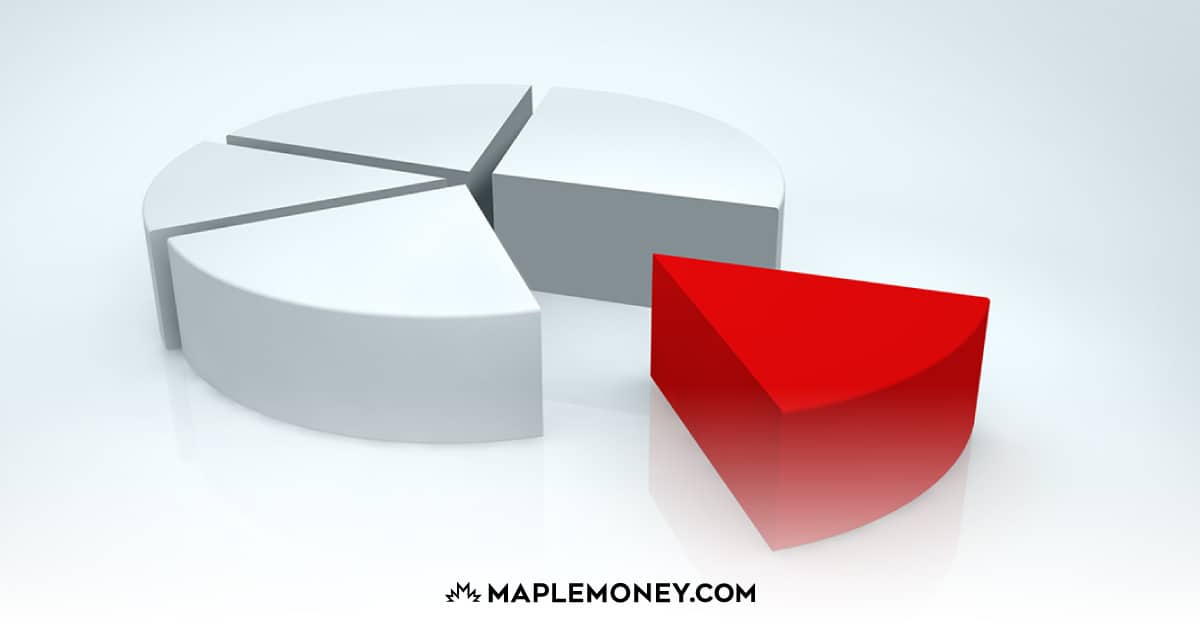XIU vs XIC: Two Top Canadian Index ETFs Compared

It’s no longer a secret. One of the best ways to create a diversified investment portfolio is through exchange-traded funds – broad-based index ETFs to be exact. Investors benefit from very low costs and the simplicity of following a broad-based stock market index.
Index funds can help you build wealth long-term, and a portfolio with staying power. You don’t have to worry about what a fund manager is doing, nor do you have to be concerned about high costs eating into your real returns over time.
The Best Canadian Index ETFs
Canadian investors can purchase Canadian ETFs and hold them in a registered account, like an RRSP or TFSA, allowing them to enjoy the resulting tax benefits.
When looking for an Exchange Traded Fund (ETF) that indexes Canadian equities, you’ll notice that two of the most popular choices are iShares funds; namely, XIU and XIC. Before we compare the two ETFs, let’s take a closer look at the investment firm behind iShares.
About BlackRock
BlackRock is a U.S. investment management firm with headquarters in New York City. While they are based in the U.S, their investment funds and overall operations extend worldwide.
Because BlackRock’s iShares ETFs are so popular, they purchase massive amounts of stock in the companies they hold. For example, BlackRock is one of the largest shareholders of Apple, Microsoft, and Wells Fargo.
Let’s take a look at two of their most popular Canadian ETFs, XIU and XIC.
XIU: iShares S&P/TSX 60 Index ETF
The investment objective of XIU is simple: create long-term capital growth for investors by replicating the performance of the S&P/TSX 60 index, which comprises 60 large-cap Canadian corporations across 10 industry sectors.
XIU follows the S&P/TSX 60 index, meaning that it contains the same 60 companies included in the index. XIU is one of the largest Canadian ETFs, with more than $11B in assets under management.
Fund Facts:
Ticker: XIU – Toronto Stock Exchange
Benchmark index: S&P/TSX 60 Index
MER: 0.18%
# of Holdings: 60
AUM: $11.07B
Inception Date: September 28, 1999
Distribution Frequency: Quarterly
Dividend Yield: 2.91% (as of Aug 10, 2022)
P/E Ratio: 15.06
Top Ten Holdings:
Royal Bank
Toronto Dominion
Enbridge Inc.
Brookfield Asset Management
Canadian National Railway
Canadian Pacific Railway LTD.
Bank of Nova Scotia
Bank of Montreal
Canadian Natural Resources LTD
TC Energy Corp
XIC: iShares Core S&P/TSX Capped Composite Index ETF
Like XIU, the primary objective of XIC is to generate long-term growth for investors. But instead of tracking 60 leading Canadian stocks, XIC holds more than 95% of the stocks in the entire Canadian stock market, 238 to be exact. XIC features a lower Management Expense Ratio than XIU, 0.06% vs. 0.18%.
Fund Facts:
Ticker: XIC – Toronto Stock Exchange
Benchmark Index: S&P/TSX Capped Composite Index
MER: 0.06%
# of Holdings: 238
AUM: $9.3B
Inception Date: February 16, 2001
Distribution Frequency: Quarterly
Dividend Yield: 3.00% (as of Aug. 10, 2022)
P/E Ratio: 13.62
Top Ten Holdings:
Royal Bank
Toronto Dominion
Enbridge Inc
Brookfield Asset Management
Canadian National Railway
Canadian Pacific Railway LTD.
Bank of Nova Scotia
Bank of Montreal
Canadian Natural Resources LTD
TC Energy Corp
Before you make your decision based entirely on the management expense ratio, it’s important to take a closer look at each of these ETFs. Below are some of my thoughts on the XIU vs XIC issue.
XIU vs. XIC: Which Is Better?
First of all, it’s important to note that the top 10 holdings for XIU and XIC are identical. So you are getting the same 10 companies at the top of the list. Additionally, the weights in both of these ETFs are based on market capitalization. But there are some fairly important differences involved as well.
First of all, XIC currently holds 238 companies. Compare that to the 60 held by XIU. With XIC, you are going to see greater diversification.
But the S&P/TSX Capped Composite Index (XIC) limits the weighting of each company to 10% of the total holdings, to reduce volatility. As a result, the top 10 holdings in XIC account for only 33% of the total portfolio, while in XIU, the top 10 holdings make up 46% of the portfolio. The downside of a capped index ETF is that returns might also be reduced.
XIC vs. XIU: The Bottom Line
To summarize, you can’t go wrong with either one of these index ETFs. For my money, XIU is the slightly better choice, because I’m willing to give up slight diversification gains for long-term performance, and that’s where the numbers don’t lie – the average 10-year return of XIU has delivered 9.10% vs. 8.53% for XIC.
That’s enough of a difference to overcome the slight MER (0.18% vs. 0.06%). If you are willing to sacrifice returns in order to lower volatility ever so slightly while owning the entire Canadian market, then you should consider XIC. Ultimately, though, either of these ETFs will provide a better return than the majority of actively managed mutual funds, whose returns are dragged down by high MERs.


Comments
This was a great article. I’ve been trying to decide which stock to buy for a while. I like XIU for its liquidity, but you’re right – it does make more sense to limit exposure to any future dogs.
What are you thoughts on ZCN capped composite? That was another one I was considering for my Canadian allocation.
Good article. I’m trying to decide between XIU, XIC or even even HXT. However, even if the article mentions update Aug 2017, the MER seems out of date, I believe XIC is now 0.06 and XIU 0.18.
Greetings beloved.
How does one invest such, Xiu, Xsp,Xic ,etc. Fairly new to the game. Can I go to my financial institution and inquire or online investing
Why not mention the investment returns of these ETF ?